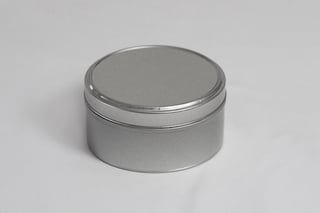The success of luxury brand building for chocolate and confectionery products comes down to ten factors, as identified by researcher K.L. Keller in 2009. The following provides summaries of each of these critical factors that determine luxury branding success.
1. Prioritizing Luxury Image
A premium image for luxury brands is essential, so controlling that image must be a top priority. The five elements that differentiate luxury from non-luxury experiences, as suggested by Vigneron and Johnson, are:
- perceived conspicuousness
- uniqueness
- quality
- hedonism
- perceived extension of the self
The latter two on this list are personal, whereas the first three are non-personal-oriented perceptions. Consumers perceive these dimensions as delivering exclusive experiences and expect luxury brands to live up to these ideals, which all play a part in perceptions of elevating self-image. These images can be conveyed in the packaging.
2. Intangible Brand Associations
Creating multiple intangible associations, along with an aspirational image, is another crucial building block to luxury branding. These intangible associations come in many forms, including those listed in #1 above. Consumers tend to construct their own intangible associations with luxury. But broadly speaking, the brand must connect with values and ideologies common to the target market sectors.
3. Pleasurable Consumption Experiences
The unrestricted senses of pleasure, self-indulgence and escapism must be part of the luxury equation. The taste of chocolates and confectionery treats alone can satisfy the pleasure principle, but marketers can go a step further with the packaging. Researching the colors and shapes that luxury seekers prefer is an important step to maximizing pleasurable consumption. The idea is for the taste to match the perceptions created by the packaging.
4. Close Attention to Brand Elements
Brand elements such as logos, symbols, packaging and signage must be presented in a way that tells a subliminal story that resonates with luxury consumers. That's why it's imperative for packaging designers to pay close attention to detail. The more people are attracted to the package, the closer attention they will pay to details, which need to be consistent with the product's image. While the most captivating and memorable logos need to be simplistic, they must also correspond with the product's emotional themes.
5. Secondary Associations
A luxury brand's image can be extended through secondary association, such as celebrity brand ambassadors who promote the product through various communication channels. Secondary associations may also include events, such as birthday parties and anniversaries. Furthermore, they can be triggered by countries or other authoritative entities.
6. Distribution Through Selective Channels
The selection of channels through which luxury brands are distributed and promoted must be considered carefully. As the old saying goes, "the medium is the message." That means that perceptions are often shaped by the channels in which they are delivered. Chocolates promoted on a children's TV program, for example, create a different attitude and perception than those advertised in a high-end glossy publication.
7. Premium Pricing for Quality
The key to premium pricing of luxury brands is to avoid discounts and markdowns as much as possible. The object is to maintain a level of elite perception, even during times of economic downturn. After all, a luxury brand is meant to be perceived as a reward for those who can afford it, not for a random mass market.
8. Carefully Managed Brand Architecture
Brand architecture is another facet of luxury marketing that requires careful precision. In other words, the hierarchy in which brands are structured within an entity, needs to make sense and be consistent with luxury consumer expectations. Companies must be careful not to start overlapping low-end and high-end brands as a strategy to move more units. The integrity of luxury qualities must be preserved and reserved for consumers who can afford premium prices.
9. Broadly Defined Competition
When mapping out competition, luxury brands must use broad definitions to account for other categories of luxury brands that compete in the realm of disposable income. People who regularly spend money on luxurious chocolates and confectionery, for example, may also set aside discretionary dollars for exotic flowers, but may have to decide between one or the other at certain times.
10. Trademark Protection
It's not a conspiracy theory that luxury brands are sometimes counterfeited by unknown nefarious entities in different countries. Counterfeiters may degrade a brand's image by marketing an inferior product, disguised as a luxury brand, which can be costly in terms of reputation and lost revenue. That's why luxury brands must be committed to protecting all trademarks and cracking down on those who infringe on intellectual property.
Conclusion
Building a luxury brand is a multi-dimensional process that requires all ten of the above concerns. There may be even more elements to explore to enhance marketing effectiveness. These guidelines can provide a competitive edge for entities wishing to enter the arena of luxury brands.
Disclaimer:
The postings in this blog section do not necessarily represent Desjardin's positions, strategies or opinions.
References and Further Reading
- Luxury branding: the industry, trends and future conceptualisations (2015), by Yuri Seo and Margo Buchanan-Oliver
- Food packaging: The medium is the message (2010), by Corinna Hawkes
- More articles on Chocolates , Biscuits and Confectionery packaging, by Alex Cosper and Dawn M. Turner
- Multisensory design: Reaching out to touch the consumer (2011) by Charles Spence and Alberto Gallace
- Assessing the influence of the color of the plate on 2 the perception of a complex food in a restaurant setting (2013), by Betina Piqueras-Fiszman, Agnes Giboreau and Charles Spence
- Does the weight of the dish influence our perception of food? (2011), by Betina Piqueras-Fiszman, Vanessa Harrar, Jorge Alcaide and Charles Spence
- The weight of the container influences expected satiety, perceived density and subsequent expected fullness (2011), by
Betina Piqueras-Fiszman and Charles Spence







